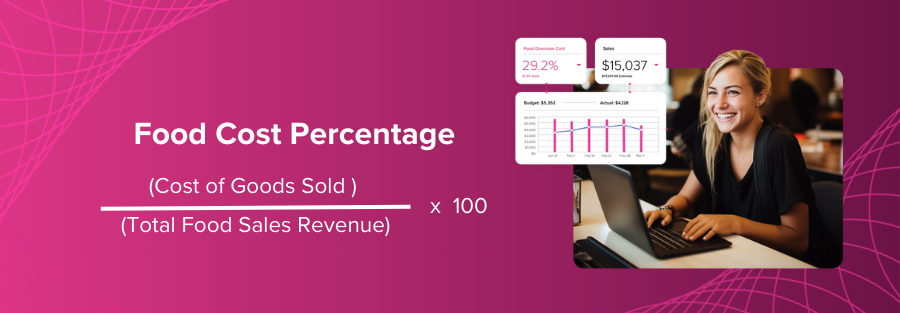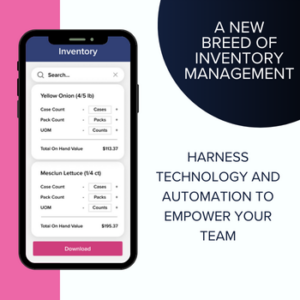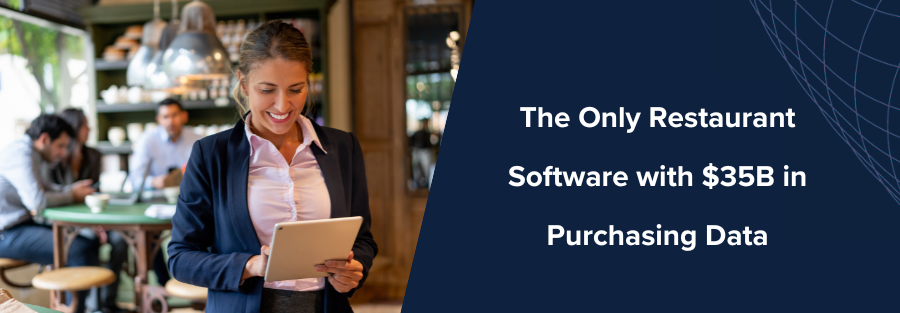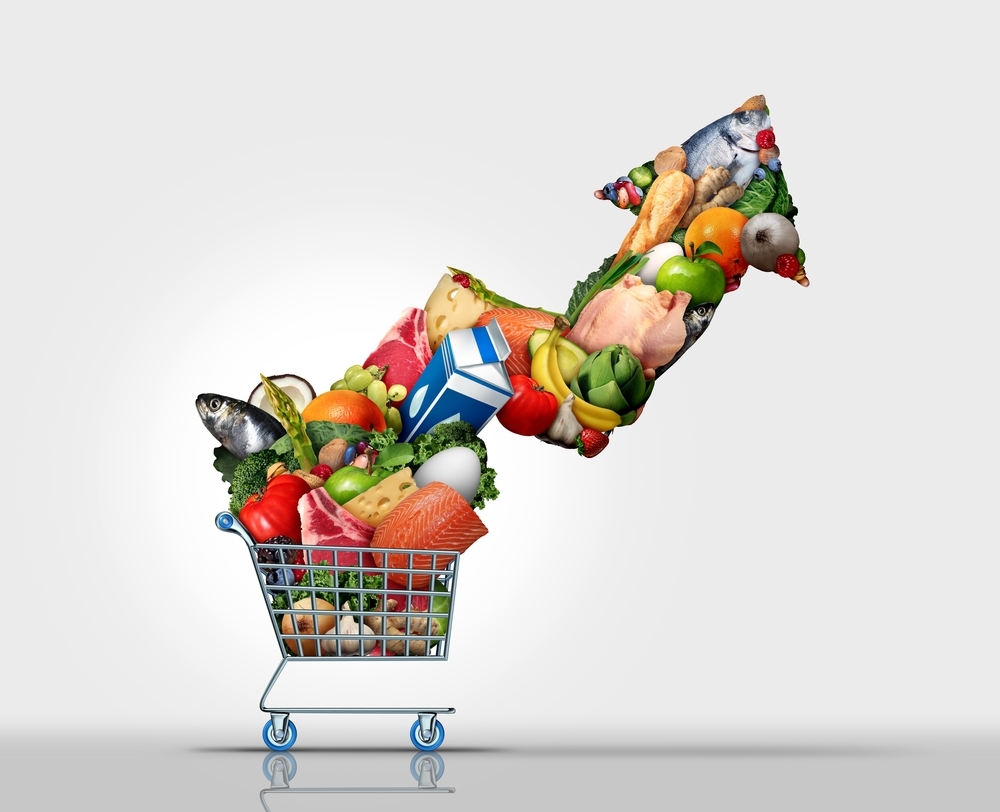How To Reduce Food Cost Percentage In Restaurants
Restaurant managers have multiple responsibilities on a daily basis, so it can sometimes be difficult to determine where to focus your time and attention. Concentrating on how to reduce food cost percentage in restaurants can lead to big business rewards over time. With food costs representing a substantial portion of expenses, controlling these costs can make the difference between a thriving restaurant and one that struggles to stay afloat. Learning how to reduce food cost percentages is a skill that can significantly boost your bottom line.
Understanding How To Calculate Food Cost
Before we dive into how to decrease food cost percentage in restaurants, it’s essential to understand how to calculate food costs. This metric is a vital indicator of your restaurant’s financial health.
What Is Food Cost Percentage?
Food cost percentage is a common metric used in restaurant operations. Simply put, it measures the cost of ingredients used compared to the revenue generated from selling the food made with those ingredients. It provides insight into how efficiently a restaurant manages its food expenses relative to its sales.
Formula for Calculating Food Cost Percentage:
Food Cost Percentage = [Cost of Goods Sold / Total Food Sales Revenue] * 100

** Cost of Goods Sold is calculated by taking the Beginning Inventory plus Food Purchases during the period and subtracting the Ending Inventory. Check out this article for a more in-depth explanation of calculating food costs.
Average Food Cost Percentages
Keeping food cost percentages in check ensures that food expenses align with sales, directly impacting profitability. Typically, average food cost percentages can range between 28% to 35%, though this can vary widely based on the restaurant type, dining options (fast food versus dine-in), and menu offerings.
Since no two restaurants are exactly alike, the best approach here is to look at historical food cost figures for your restaurant to get a historical average, then set a target food cost for yourself that is within reach once changes are implemented that can help reduce your historical percentages.
Common Causes of Food Waste
To learn how to reduce food cost percentage in restaurants effectively, you must first identify what is causing excess waste in your food usage. Here are a few common culprits:
Inefficient Inventory Management
 When inventory is not tightly monitored or controlled, managers tend to overstock perishable items, which spoil before use and must be discarded. Inconsistent tracking can also cause inaccuracies in inventory levels, making it challenging to plan purchases effectively and prevent stockouts. When critical food items run out before the next scheduled shipment, managers often resort to purchasing the needed items at retail prices from an outside vendor, such as a local grocery store.
When inventory is not tightly monitored or controlled, managers tend to overstock perishable items, which spoil before use and must be discarded. Inconsistent tracking can also cause inaccuracies in inventory levels, making it challenging to plan purchases effectively and prevent stockouts. When critical food items run out before the next scheduled shipment, managers often resort to purchasing the needed items at retail prices from an outside vendor, such as a local grocery store.
Accurately monitoring inventory levels is crucial to avoid these issues. Implementing an automated inventory management system, such as Back Office’s Food Cost Management software, can streamline this process and reduce unnecessary waste and stockout scenarios that tend to increase food costs.
Supplier Pricing
Restaurant owners often become complacent with their suppliers, assuming they have the best prices without regularly comparing costs from other vendors. Consistently reviewing pricing options through different vendors and actively watching your invoices for historical price increases can significantly reduce food costs.
Inadequate Portion Control
Excessive portion sizes lead to higher food cost per portion, resulting in escalating food costs. Adding even a small amount of excess ingredients to each dish can really show up in your total food cost over time. A lack of portion control also makes it challenging to predict ingredient needs accurately, causing over-purchasing and additional food waste when staff use the correct portion sizes. Standardizing recipes and training staff on portion control can help to mitigate these issues. Utilizing portion control tools, such as scales and measuring cups, leads to consistent portion sizes across every dish any employee makes. These might seem like small changes, but tightly controlling your measurements can translate to thousands of food cost dollars over the course of a year.
Menu Design
Menu design is about more than choosing appetizing food images and fancy entrée names. A menu created without food cost in mind can inadvertently feature low-margin items that don’t contribute significantly to profitability. Menu engineering can highlight high-profit items and phase out low-margin offerings. By featuring popular but diverse dishes, you can optimize ingredient usage and reduce waste.
Strategies for Reducing Food Cost Percentage
Once you have identified the inefficiencies affecting your food cost, you can implement tactics to correct the issue. Savvy business owners employ key techniques to manage and reduce food costs, ensuring their restaurants remain profitable and efficient. Looking for strategies that can help make it happen? Here’s how to reduce food cost percentage in restaurants:
Menu Engineering

Effective menu engineering involves analyzing the popularity and profitability of menu items available in your restaurant, then reworking the menu layout to phase out underperforming dishes and highlight items that contribute the most to your bottom line. By designing a menu with customer preferences and food cost management in mind, you can maintain tighter food cost controls while maximizing profitability.
Leverage menu engineering in your restaurant by following the 4R widget:
- Reprice: Look for items with high sales and no profit margin. These items can bankrupt your business if they aren’t adding profit to your bottom line, so change the pricing on these items to ensure they are making positive contributions to your profits.
- Replate: Items with low sales and high margins should be featured in a new way to help increase their popularity. Rebranding or highlighting these items in your menu can help grab the attention of your customers.
- Retain: Keep any items that have high sales and high margins. These dishes are already popular with customers and are strong contributors to your bottom line, so these are a win-win.
- Remove: Consider removing items altogether that are costly to prepare and have low sales volume or interest to your customers.
Purchasing Strategies
Adopting smart purchasing strategies involves negotiating contract terms with suppliers, taking advantage of bulk purchasing discounts, and aligning orders with seasonal availability to secure the best prices. You can see positive impacts on your food cost percentage by:
- Securing Long-Term Contracts: Lock in stable pricing agreements over the long term to more accurately predict food costs and protect your restaurant from the impacts of market pricing fluctuations.
- Negotiating Bulk Purchasing Discounts: Even smaller restaurants can benefit from bulk purchasing discounts over the entirety of a contract. Bulk discounts, especially on shelf-stable items with no spoilage risk, lead to lower unit prices and reduce overall food cost.
- Aligning Orders with Seasonal Availability: Structure your ordering around seasonal availability to ensure the best access to fresh, in-season ingredients at competitive prices.
- Comparing Supplier Prices: Investing time in comparing prices from different suppliers can give you better negotiating power. Even if you stay with your trusted supplier, providing proof of current competitor pricing can help you negotiate the best pricing possible.
Developing strong relationships with reliable vendors also ensures consistency in quality and pricing, minimizing unexpected cost fluctuations in your restaurant.
Automated Inventory Management

Technology plays a significant role in reducing food waste and managing stock effectively. Implementing an automated inventory management system can help you maximize the benefits to your bottom line. In the National Restaurant Association’s (NRA) Restaurant Technology Landscape Report for 2024, 76% of operators surveyed credit technology for giving them a competitive edge. Automated systems track inventory levels in real time, automate order placements when stock runs low, and provide detailed analytics for better decision-making.
You can seamlessly incorporate technology into your current food cost management processes by:
- Using Inventory Management Software: Tools like BEP Back Office track inventory levels in real time, reducing the risk of human error, over-purchasing, and waste.
- Creating Routine Forecast Reports: Analyze your sales data regularly to accurately predict future demand, ensuring you order the right amount of inventory. When using a robust technology solution for inventory management, you can also generate many of the reports automatically.
Staff Training
Properly training all kitchen and front-of-house staff on the importance of portion control, waste reduction measures, and the food handling process can significantly improve food cost management. Well-trained staff help minimize waste by adhering to precise portion sizes and utilizing ingredients efficiently. Additionally, educating employees on inventory management practices ensures they understand how to handle and store ingredients properly, reducing spoilage and unnecessary waste.
To ensure your staff is involved in your food cost control efforts, you should provide:
- Portion Control Training: Train kitchen staff to adhere to standardized portion sizes for every dish. Provide simple-to-use tools, such as portion control cups, to ensure compliance across all shifts and team members.
- Waste Reduction Training: Educate employees on the most common causes of excess waste, such as improper rotation and storage of perishable food items.
- Accurate Order Taking and Communication: Train front-of-house staff to ensure accuracy when taking orders and communicating special requests to kitchen staff. This training minimizes food waste due to incorrect orders and allows staff to prepare dishes to customer specifications, reducing the need for remakes.
Benefits of Leveraging Technology in Controlling Food Costs
 The food service industry is a challenging business that requires careful cost management to maintain profitability. With the help of technology, managing these costs has become much easier and more efficient. By utilizing technology such as Back Office, businesses can reduce waste, track inventory, and optimize recipe costing to maximize profits. These powerful tools automate your reporting and highlight unique efficiency opportunities for your restaurant. Here’s how leveraging this technology can benefit your operation:
The food service industry is a challenging business that requires careful cost management to maintain profitability. With the help of technology, managing these costs has become much easier and more efficient. By utilizing technology such as Back Office, businesses can reduce waste, track inventory, and optimize recipe costing to maximize profits. These powerful tools automate your reporting and highlight unique efficiency opportunities for your restaurant. Here’s how leveraging this technology can benefit your operation:
Improved Accuracy
Automating food cost management reduces the risk of human error in calculations, which can lead to inaccurate costs and financial losses. With precise real-time data, you can ensure that inventory levels are always up-to-date, which helps avoid over-ordering or stockouts. This accurate data also aids in more precise forecasting and planning, ultimately leading to better decision-making and financial stability.
Streamlined Processes
Automation streamlines processes and increases efficiency in restaurant operations, leading to better customer service and increased profitability. An automated system reduces the time spent on manual data entry and calculation, freeing staff to focus on other tasks and increasing productivity. Restaurant owners who leverage the Back Office software can quickly snap a photo of an invoice, upload it, and watch as the system instantly catalogs the ordered items.
Ultimately, this automation saves managers and owners approximately 80% of the time typically spent on inventory invoice management compared to a manual entry process.
Real-Time Insights
Automating your food cost management opens the door to real-time data. This constant stream of information enables restaurant owners to make informed decisions about menu pricing, inventory, and purchasing. Managers can use this real-time data to swiftly identify trends, such as which menu items are most popular or which ingredients are nearing their expiration dates. This level of awareness enables proactive adjustments, reducing waste and optimizing purchasing decisions.
The embedded restaurant reporting tools also generate custom reports for tracking key performance indicators, aiding in more effective strategic planning and resource allocation.

Cost Reductions
Automated food cost management helps identify areas of unnecessary spending and recommend cost-saving measures. By proactively identifying these inefficiencies, restaurants can implement corrective actions quickly, leading to significant cost savings. Additionally, automated systems continuously monitor and adjust purchasing strategies based on real-time data, ensuring consistent cost control without compromising quality or customer satisfaction.
Reducing Food Cost Percentage with Efficient Technology
Managing food costs is pivotal for any restaurant aiming to enhance profitability and reduce unnecessary expenses. By understanding food cost percentages, identifying inefficiencies, and implementing strategic measures, you can significantly control and reduce food costs in your restaurant.
Integrating modern technology, like Back Office, can further streamline and optimize these efforts. By leveraging real-time data and comprehensive analytics, restaurant owners can make informed decisions that directly impact the bottom line.
Ready to take control of your food costs? Download our whitepaper, “Back Office Technology: A Foodservice Must-Have,” for more tips on keeping your food cost numbers in line by leveraging today’s smart technology.
